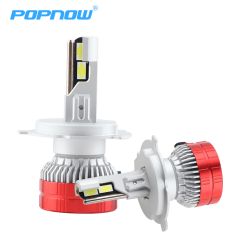Car headlight bulbs explained We explain the different types of car headlight bulbs now on offer, from LEDs to xenon bulbs, and their benefits to help you choose
Although a growing number of new cars are now sold with LED (light-emitting diode) headlights, and xenon bulbs are becoming more commonplace, most cars on Britain’s roads still use traditional halogen bulbs. We look at the different types of headlight on offer, and whether it’s worth opting for an upgrade.
LEDs
Taillights made up from numerous light-emitting diodes have been around for a number of years. LED daytime running lights are increasingly seen, and LED headlights are now arriving on some upper-end models. LEDs are simply semiconductors with no wear-and-tear parts, which should – in theory – last the lifetime of the car. Not only can they look spectacular but they have some clear benefits. They require less electricity than halogen bulbs, reducing the car’s energy consumption and therefore CO2 emissions, and causeless drain on the battery. The bright light that they produce is also much closer to daylight, giving less glare and making them less likely to dazzle drivers in oncoming traffic However, they remain expensive, and as they don’t produce much heat, there are sometimes issues with their lenses frosting over in winter and reducing light output.
High-intensity discharge (HID) bulbs, or ‘xenons’, have an arc of high-voltage current rather than a metal filament to produce light. They are now quite common on family and mainstream cars, either as a factory-fitted option or an aftermarket upgrade. Bear in mind that, while xenon conversion kits can be bought very cheaply, only complete units including self-levelling and cleaning systems are road-legal in the UK and will pass an MoT. Xenon bulbs, however, have a longer lifespan than halogen bulbs, and are claimed to last 10 years before needing replacement.
Halogen bulbs
The ‘traditional’ – and low-cost – lighting option, halogen light bulbs continue to be widely fitted. There are a number of ways they can be upgraded, however. The options are:
-
so-called 'brighter' bulbs that claim to offer between 30% and 100% more light.
-
energy-saving bulbs designed to last longer and reduce energy consumption.
-
xenon-effect or ‘blue’ bulbs, which emit a blue-ish light, mainly for cosmetic effect.
Our tests
We have compared the so-called ‘brighter’ halogen headlight bulbs with standard-fit items (in two Vauxhall Astra test cars), and also with xenon headlights. In the tests we carried out, we used the best-selling ‘H7’ size of bulb and compared bulbs sold by Halfords and Bosch with the original-equipment bulbs in the Astra, alongside an Astra with a xenon headlight upgrade (costing £766 at the time). We aligned the lights at a fixed point on an unlit country lane, and took lux (light-level) readings at 10, 25, 50, 75 and 100m in front of the car. Two readings were taken at ground level, one facing upwards and the other facing the car, and one reading was taken at 1m high (pedestrian level). We also tested them at dipped beam and main beam. Photographs were taken from the driver’s seat to give a subjective assessment of light brightness, spread and colour. The xenon bulbs quite literally outshone all the halogen bulbs in our test at 10m and 25m, scoring five stars for both dipped beam and main beam performance. They were particularly strong at main beam. However, we found that xenon light did tend to cut off quite sharply at greater distances, with no light reading at all on dipped beam at 75m. Most of the halogen bulbs we tested managed one or two lux.
75m
The xenon headlights we tested in a Vauxhall Astra (a factory-fitted optional upgrade, costing £766) registered no light reading at all at this distance. On main beam, the xenon lights were only 25% as bright at 25m as they were at 10m. The upgraded ‘bright’ halogen bulbs were still around 80% as bright at 25m as they were at 10m, albeit still dimmer than the xenons.
We concluded that the greater the distance, the lesser the superiority of xenon headlights, but they were still the ‘money no object’ winner (short of buying a newer car equipped with LEDs). The performance of the upgraded bulbs we tested varied, with differing results for main beam and dipped beam, and in some tests the original equipment Vauxhall bulbs actually performed better than the ‘brighter’ aftermarket replacements. We would suggest reading recent product reviews carefully before buying any aftermarket bulbs, and choosing bulbs on the basis of what is important to you – improved long-range visibility for night-time country driving, for example, or improved short-range brightness for spotting pedestrians, cyclists and other road users around town, perhaps.






